SakenowaRecord your sake experiences and discover your favorites
尾州壽Bishu Kotobuki
Flavor Chart®
A chart created from flavor analysis of user comments.

Flavor Tags ®
Tags generated from flavor analysis of user comments.
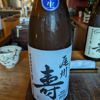
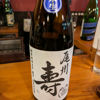
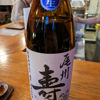
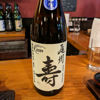
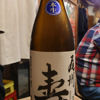
Popular Comments
Next is Bishu Kotobuki's Kame-no-o + No. 7 Orikarami.
This was also freshly opened.
First, it was served cold.
The first aroma is faintly sweet.
In the mouth, there is a slight acidity, umami, and sweetness.
It gradually finishes with a slight astringency that is typical of Kame-no-o.
Next, it was served warm.
The first aroma is faintly sweet.
In the mouth, it has a slightly robust umami and sweetness.
The taste is slightly astringent, which is typical of Kame-no-o, and it gradually fades away.
It tastes better when heated up too.
Japanese>English
The first saké I had last time was a clear saké of Yumeginko from Bishu Kotobuki with No.7 yeast.
It is a draft sake, but it was stored at room temperature at the store, so we served it as it was.
The first aroma is sweet with a hint of banana and ripe melon.
In the mouth, the sweetness and umami are again like banana and ripe melon.
The flavor profile is even clearer than last time, sweet and delicious 🥰.
I think this sake tastes better if you let it sit for a bit after opening.
It was delicious 🍶✨
Japanese>English
Finally, we had a bottle of Yumeginko +7 Sumi-shu.
This was also freshly opened.
First, it was served at room temperature.
The first aroma is faintly sweet.
In the mouth, there is a moderate acidity with a hint of sweetness and umami like banana or ripe melon.
The flavor profile is clear, probably due to the lack of orikura.
Then warmed up.
The first aroma is faintly sweet.
In the mouth, it has a sweetness and umami like banana and ripe melon.
The moderate acidity adds a nice accent.
Both cold and warmed sake were delicious.
I think this was also the best of the three.
They have 2 types of Sumi-shu and 1 type of Oragara-mi that I haven't tried yet, so I have to go drink them 😋.
Japanese>English
Brands from Fujiichi Shuzo
KikutakaBishu Kotobuki
Similar Brands
We analyze the flavors based on everyone's comments and select similar brands.
UrazatoSimilar Characteristics
Location
3-chōme-4-30 Inaba, Inazawa, AichiOpen in Google Maps
Timeline
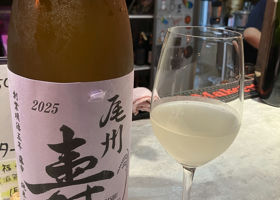
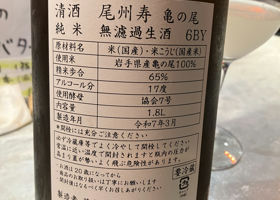
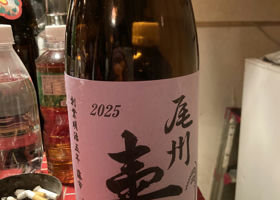
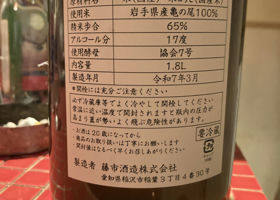
Bishu Kotobuki純米無濾過生自社培養酵母

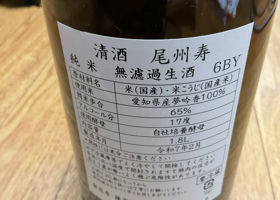

晩酌保全委員会
If you are a Kikutaka freak,
You will chase after this sake as well as Koei Kiku, this sake.
The sweet and spicy slightly carbonated taste is accented by the bitterness that follows.
This is another gem that reminds us of Kikutaka's DNA.
It will heal the fatigue of your business trip.
Japanese>English
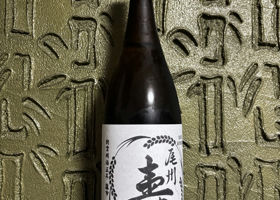
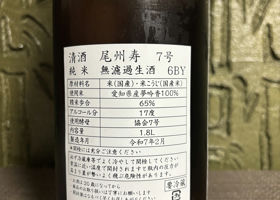
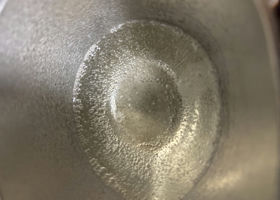
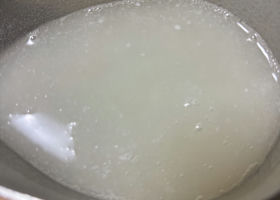
ごう
Bishuju Junmai Unfiltered Nama Nigori Nora aged in ice for 7 months.
The top clear aroma is relatively mild, iso-type aroma typical of the Fujiichi Sake Brewery.
It still has a noticeable tingling gasiness and bubbles.
The relatively smooth texture and gasiness are delayed by a beat, followed by acidity and a gentle, subdued sweetness. Then the umami spreads.
When the lees are mixed, the milkyness becomes more pronounced, and a three-dimensionality and depth are particularly noticeable.
The acidity continues to increase from the mid-palate, while the gasiness remains, and the bitterness accompanies the sweet and umami flavors. The astringency can also be felt later on.
The sweetness is interesting, with a hint of iso and a variety of complex flavors.
It is still very tasty.
Japanese>English
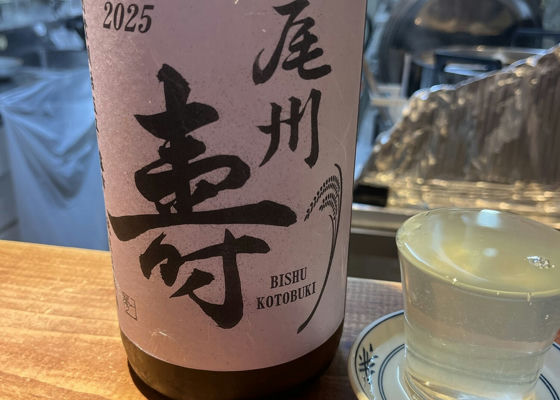
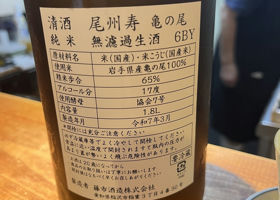
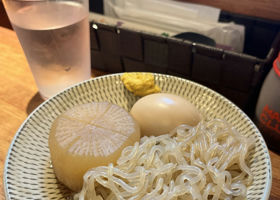
SHINO
Fruity sweet and sour sweet...
It's insanely delicious!
Oden is also good in summer. ♨️
Japanese>English
ジェイ&ノビィ
Hi SHINO 😃
Summer oden🍢 is good. ♨️
Our family had nabe🍲 for dinner last night💦.
Japanese>English
SHINO
Hi Jay~☺️ summer is warm in a cool room, isn't it? And good drinks 🍶.
Japanese>English
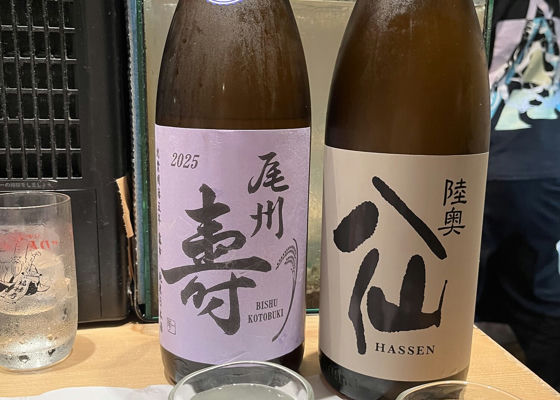
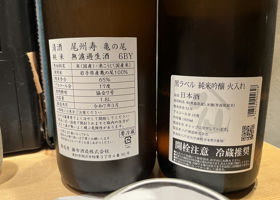
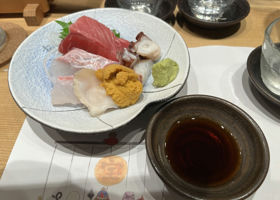
しんしんSY
As soon as I finished the Genmai, the manager brought me these two!
Purple label of Bishu Kotobuki
Last year, the label had a yellowish tinge.
The toji of Koueikiku used to work here, so he made a relatively fruity sake at Bishu Kotobuki (according to the manager)!
It is the successor to Kikutaka.
The old-fashioned label made me think it would be light and dry, but it was surprisingly easy to drink!
Sashimi was also served on this day!
Knowledge
Ingredients: Kame-no-o (Iwate Prefecture)
Rice polishing ratio: 65
Alcohol content: 17
Japanese>English
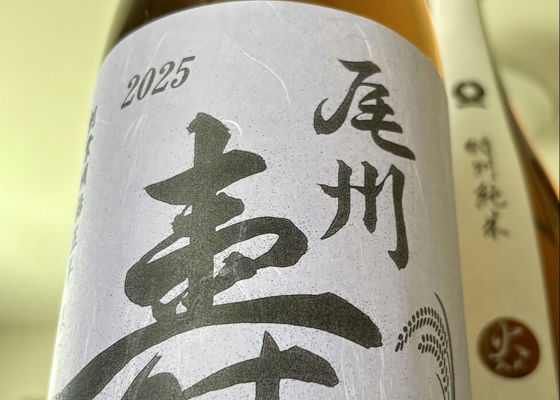



ごう
Bishu Jukeno-o Junmai-shu, unfiltered, unpasteurized sake.
Following the lightly cloudy one, the cloudy one this time.
The bottle was opened with a pop! The fermentation was vigorous even in the ice compartment.
The top clearness is soft, mild and pleasantly iso-ish.
The gasiness was extended by the secondary fermentation in the bottle, which may be due to the fact that there were a lot of sake lees in this bottle, and it had a pleasant petitiveness.
The gasiness is also bitter, and the taste is both rich and dry.
When you mix the casks, the first touch is silky softness, and the more casks you have, the stronger the addition of acidity and umami can be felt along with the gasiness of the gas.
Then, the acidity is extended and is felt well, while the complexity of the umami and sweetness is felt.
However, the fade-out feeling is quick and clean with a bitter taste.
The long bitter aftertaste is also pleasant.
This wine has had a lot of trouble this season, and we believe it is a once-in-a-lifetime experience.
A dark, delicious sake with gas in midsummer!
It is the best!
Japanese>English
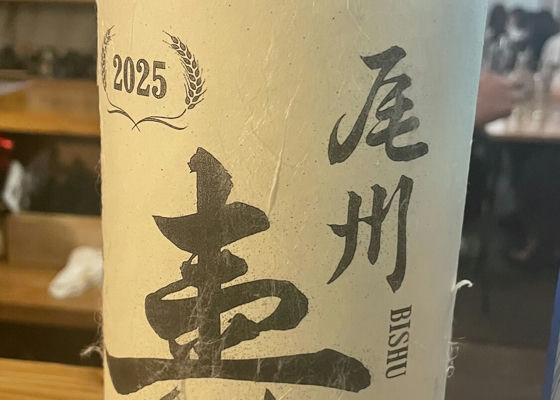

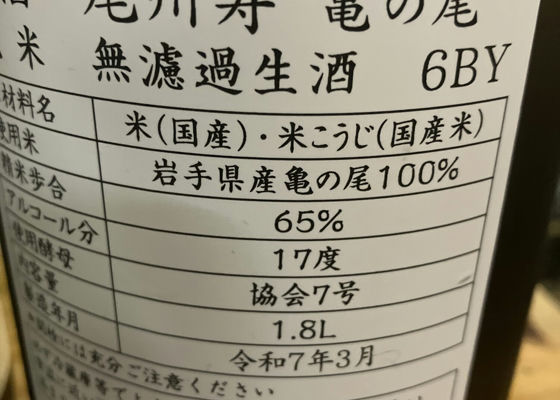
まさ
I prefer the turtle tail.
Japanese>English
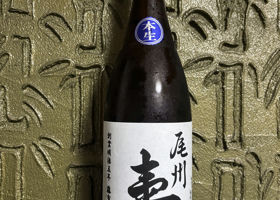

ごう
Bishu Kotobuki pure rice sake unfiltered unpasteurized Kame-no-o 7 yeast clear sake.
It has been aged for one year in ice-cold storage.
The iso-type aroma typical of the Fujiichi Sake Brewery is soft but firm, and at the same time, it has an ales or seme aroma.
When you drink it, you will be inundated with a firm umami and acidity.
The texture is smooth, but as it rushes through the mouth and spreads at once, you can also taste bitterness and astringency, as well as a high acidity in the aftertaste.
It was not unpleasant at all, but rather a roller coaster or firework-like dark and robust flavor that glows and fades away to reveal a lingering aftertaste.
I'm wondering what to do with this season's sake quality again, it's too delicious.
Japanese>English
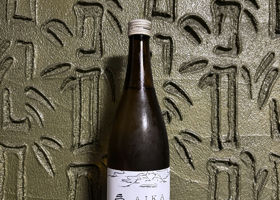
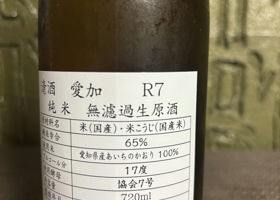
ごう
The iso-type aroma is typical of the relatively mild Fujiichi Sake Brewery.
The relatively smooth texture on the tongue is followed after a beat by a rush of umami and acidity, with sweetness leading the way.
The acidity continues to develop in the mid-palate, and while the sweetness and umami can be felt, there is also an astringent and astringent taste in the aftertaste with the acidity at the forefront.
The sweetness is interesting with a variety of complex flavors.
When warmed to human body temperature or lukewarm, it softens a bit, but also has a slight alkaline taste.
The sweetness decreases as the sake warms up, and the acidity becomes more pronounced as the sake heats up.
The flavor does not change when heated, but the acidity remains.
At 65, the sweetness and umami are reduced considerably and a hint of sweetness is felt, but the taste is dry.
Even when cooled, the sweetness comes out in the foreground, and the overall flavor is round, with a gentle tang.
When slightly added, it adds a crisp flavor that is also good.
The strength of this sweetness and sake quality is a true feat.
We are looking forward to the next season.
Japanese>English
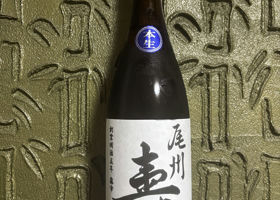

ごう
Bishu Kotobuki Junmai Sake, aged for one year in ice-cold storage, is unfiltered and unpasteurized.
When you take a sip, it has a yellowish color and a pleasant yet robust iso-type aroma.
The top clearness is smooth with a pleasantly thick acidity and umami.
When mixed with a small amount of ori, it has a slightly milky and gentle flavor, but at the same time, it is powerful and complex and delicious.
The slightly heavy body of the middle class is supported by the acidity and umami, and the peculiar sweetness is still Nagoya or Gifu? Gifu? It seems to go well with rice.
When the lees are mixed, a silky flavor is added, and it becomes both powerful and gentle.
Every year it changes, and the direction changes as well. However, the taste as a brewery is in the same direction and it is a man's sake.
Thank you very much again for this season!
Japanese>English
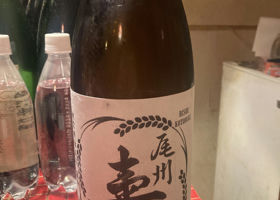
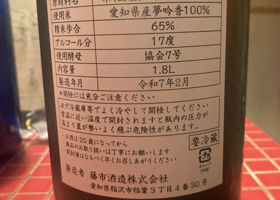
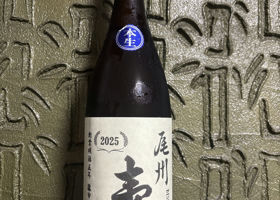
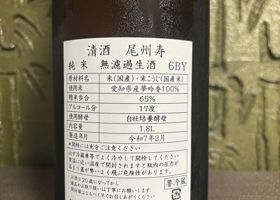
ごう
Bishu Kotobuki Junmai Unfiltered Nama Sake.
The aroma is relatively mild, with an iso-type aroma reminiscent of blue melon.
The color is a little yellow, and when you drink it, you can sense a banana-like overtone and at the same time feel a strong acidity.
The depth of the umami and the sweetness that accompanies it are followed by a fruity bitterness.
The acidity is relatively quick, but the bitterness can be felt, so it goes well with resetting a meal.
It has a strong Otoko taste, but it also has a three-dimensional taste, which I feel is a flavor originating from the brewery.
I am looking forward to the next season!
Japanese>English
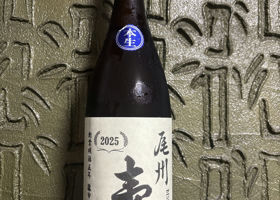
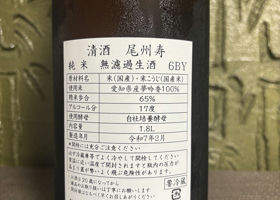
ごう
Bishu Kotobuki Junmai Unfiltered Nama Sake.
The aroma is relatively mild, with an iso-type aroma reminiscent of blue melon.
The color is a little yellow, and when you drink it, you can sense a banana-like overtone and at the same time feel a strong acidity.
The depth of the umami and the sweetness that accompanies it are followed by a fruity bitterness.
The acidity is relatively quick, but the bitterness can be felt, so it goes well with resetting a meal.
It has a strong Otoko taste, but it also has a three-dimensional taste, which I feel is a flavor originating from the brewery.
I am looking forward to the next season!
Japanese>English



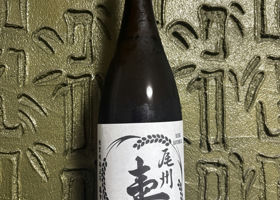
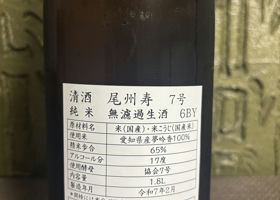
ごう
Bishu Kotobuki junmai sake, unfiltered and unpasteurized.
It has a strong iso-type aroma.
The upper part is smooth and smooth on the tongue, with a thick umami and weighty flavor, and a moderate acidity and sweetness coming from the back. I have a feeling it will go well with Nagoya rice this season as well.
When the lees are mixed, a silky flavor is added and it becomes both powerful and gentle.
It is thick yet smooth, with a tangy acidity and a moderate sweetness, but you can also feel the alcohol at 17 degrees Celsius.
This sake, which changes and brushes up every year, is a sake that I personally want people to know about, but don't want them to know about it.
Thank you very much again for this season!
Japanese>English